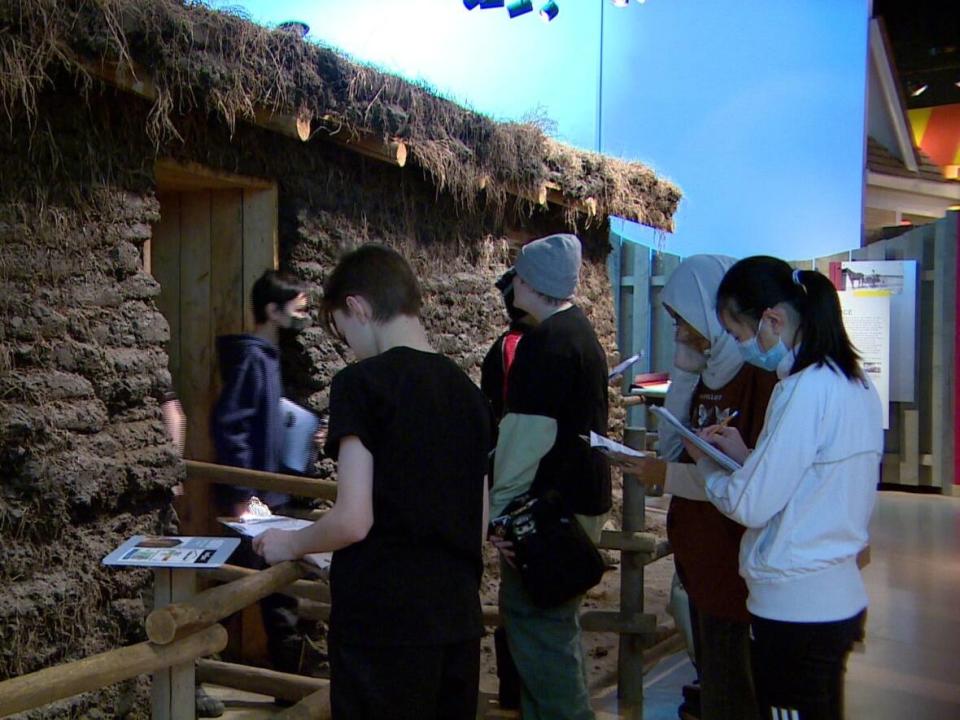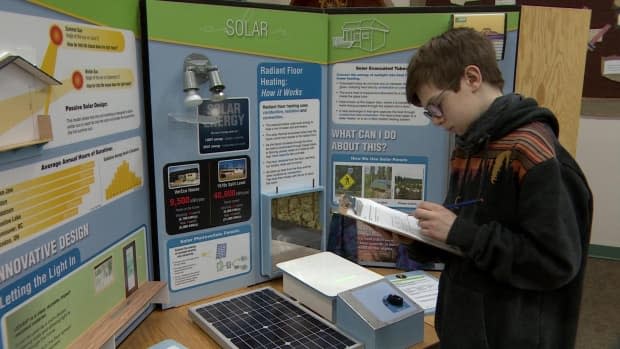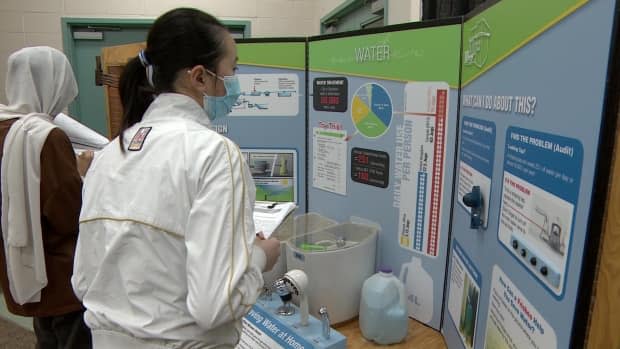WDM exhibit offers students insight into energy efficiency in old and new buildings

Eliot Olson gravitated to the solar heating display on a recent visit to the Western Development Museum (WDM).
"I'm into that kind of thing," said the Grade 7 student from Caswell Community School. "It can really help if you got solar panels for your home and it can help reduce bills as well.'
Olson and his classmates were learning about energy efficiency and sustainable buildings through hands-on experience during the WDM's 10th Smarter Science Better Buildings exhibit in Saskatoon, run in conjunction with the Saskatchewan Environmental Society (SES).
The exhibit combines interactive displays about energy efficiency in today's buildings with exploration of the museum's galleries.

SES education co-ordinator Amber Burton said the program features six hands-on displays: energy efficient lighting and appliances, water conservation, home retrofits, building materials, solar heating and a model net-zero home.
"And they learn about how they can be more sustainable in their behaviours at home as well," Burton said.
Students also consider energy efficiency and sustainable building methods used in the past while looking at the old buildings on display in the museum.
"I think more people should be living in [net-zero] homes and building them, because it uses much less electricity and heat and energy," student Nini Liang said.

Courtney Tuck-Goetz, the WDM's education and public programs co-ordinator, said most people don't really think of math and science when they think of the museum.
"This is a really great opportunity to incorporate those curriculum connections into a program that we're able to offer and connect with historical examples," Tuck-Goetz said.
Having students see historical examples of how homes were built in the past is eye-opening for students, said Tuck-Goetz.
"Learning that there are things from the past that we can learn about and use to our benefit and kind of dispel this kind of idea that everything new is better," she said.
Olson said he learned some things he could use at his own home.
"When I get home I'm going to definitely do some things to my house that will help it be more sustainable for the future, and reducing bills and things like that," Olson said.

Liang said she will be more mindful of how much water and heat she uses.
"I'll set down the heat thermostat and turn off the lights more and just use more natural sunlight," Liang said.
"If we all learn about this we can choose how to have a better home and help with climate change."
The program runs at the Saskatoon WDM until Feb. 17, then will travel to the other three WDMs in North Battleford, Yorkton and Moose Jaw, and also at a location in Prince Albert.

 Yahoo Movies
Yahoo Movies 